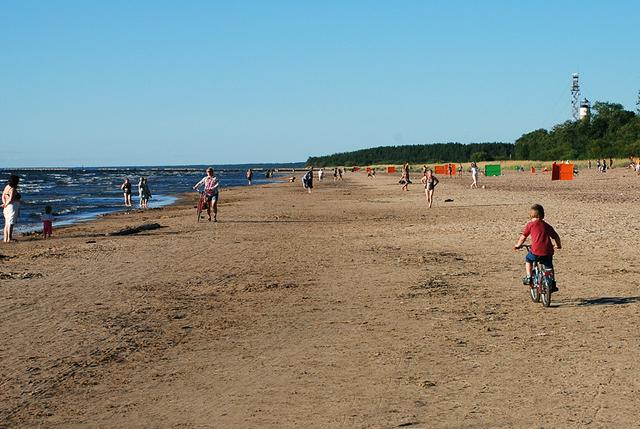Narva-Jõesuu is a town in eastern Estonia at the Gulf of Finland, 15 km north from Narva.
 At the beginning of the 19th century the town with its villas and spas became a popular summer holiday destination for wealthy visitors from St Petersburg. During World War II, many buildings were destroyed and the significance of Narva-Jõesuu as a resort town decreased. After the war, during the Soviet era, Narva-Jõesuu was mainly a resort town for middle-class. But after the Soviet Union, tourism decreased again. Hence, some of the resorts are now abandoned. Nevertheless, some spas are still in business.
At the beginning of the 19th century the town with its villas and spas became a popular summer holiday destination for wealthy visitors from St Petersburg. During World War II, many buildings were destroyed and the significance of Narva-Jõesuu as a resort town decreased. After the war, during the Soviet era, Narva-Jõesuu was mainly a resort town for middle-class. But after the Soviet Union, tourism decreased again. Hence, some of the resorts are now abandoned. Nevertheless, some spas are still in business.
- Narva-Jõesuu Ethnographic Museum, Nurme 38, +3723577312. 10:00-18:00. Exhibitions about the local history, day-to-day life, culture, education, nature etc.
- T-34 Tank, Jõesuu tn (Between Narva and Narva-Jõesuu. The monument commemorates battles of World War II and indicates breakthrough of Soviet forces. Narva’s tank is the only such memorial being exhibited in Estonia from the war until today.
- Cultural kettle.
Narva-Jõesuu Ethnographic Museum, Nurme 38, +3723577312. 10:00-18:00. Exhibitions about the local history, day-to-day life, culture, education, nature etc.
T-34 Tank, Jõesuu tn (Between Narva and Narva-Jõesuu. The monument commemorates battles of World War II and indicates breakthrough of Soviet forces. Narva’s tank is the only such memorial being exhibited in Estonia from the war until today.
Cultural kettle.
- Narva-Jõesuu is a well known spa holiday destination. Numerous holiday centres and spa hotels are open to visitors.
- Narva-Jõesuu offers its visitors the longest coastal beach in Estonia. Even during hot summer days, when the beach is heavily crowded, you can always find yourself a decent place to relax with absolutely no one around, if you walk down the shore a little.
Narva-Jõesuu is a well known spa holiday destination. Numerous holiday centres and spa hotels are open to visitors.
Narva-Jõesuu offers its visitors the longest coastal beach in Estonia. Even during hot summer days, when the beach is heavily crowded, you can always find yourself a decent place to relax with absolutely no one around, if you walk down the shore a little.
- Kohvik Lemmik, Vabaduse 25, +372 3577307, +372 5577351.
Kohvik Lemmik, Vabaduse 25, +372 3577307, +372 5577351.
- Narva – Estonia's eastern-most and third largest city, on the Narva River, which is the border with Russia. Famous for the Hermann castle, right opposite of the Ivangorod's castle, and the Kreenholm factories. Even though it might seem grey and dull.
- Sillamäe – A beautiful coastal town in the east and formerly closed city with the best ensemble of Stalinist architecture in the entire Baltics. Built after the war with an uranium processing plant, successfully redesigned after Estonia's independence.
- Toila – A small coastal and historic resort town, also west-wards.
- Püssi – A poor but now recovering town with an interesting artificial mountain made of ash from its oil shale power plant, which has been depositing ash in the location since the 1930s. Nowadays, the mountain is used for motocross.
- Kuremäe – Contains the famous Pukhitsa convent/nunnery, the only Orthodox monastery in the whole of Estonia.
